
views
- Get some fresh air or place a cool towel on your neck to ease nausea symptoms.
- Take small sips of water, electrolyte sports drinks, or ginger tea to stay hydrated.
- Snack on bland foods like crackers, applesauce, and toast to help settle your stomach.
Medication

Try Dramamine if you have motion sickness. Vomiting caused by motion can make you feel ill, dizzy, and disoriented. One of the best ways to cure this form of nausea is by taking Dramamine or dimenhydrinate. Take the medicine 30 to 60 minutes before doing something that makes you motion sick, like riding in a car or going on a rollercoaster.
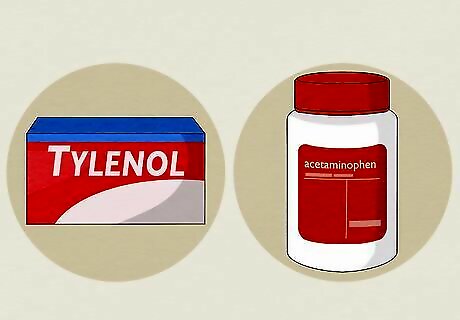
Take Tylenol if your vomiting is caused by pain. Unlike Ibuprofen, Aspirin, or other NSAIDs (non-steroidal anti-inflammatory drugs), Tylenol or acetaminophen will relieve pain without being rough on your stomach. Keep in mind that acetaminophen can cause nausea and vomiting, so only take this medication if you’ve never experienced these side effects taking it before.
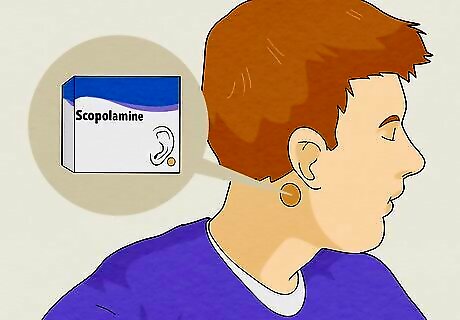
Ask your doctor for a scopolamine patch. Scopolamine patches prevent nausea and vomiting. These nifty patches stick to the skin behind your ear and can give you nausea-relieving effects for up to 3 days. Put the patch on at least 4 hours before you think you’ll be motion sick or nauseous for a preventative measure. Know that scopolamine patches have side effects like dry mouth, drowsiness, and dizziness.
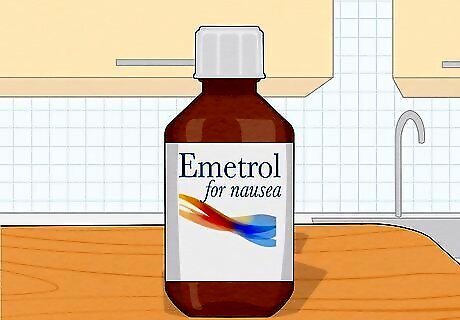
Take a dose of Emetrol to help calm your stomach. Over-the-counter Emetrol syrup may help in soothing your upset stomach. Ask your doctor if this would benefit you. If so, take the recommended amount until your stomach feels better (typically 1 to 2 tablespoons if you’re an adult). Syrups like Emetrol are safe for children. Talk to your doctor before taking Emetrol if you're pregnant.
Drinking

Sip on water after vomiting. If you’ve gotten sick a lot, it’s best to only drink small amounts of water at first. Too much water at once could cause you to throw up again, so take very small sips. As an alternative, suck on ice chips after you get sick to stay hydrated and wash out your mouth.
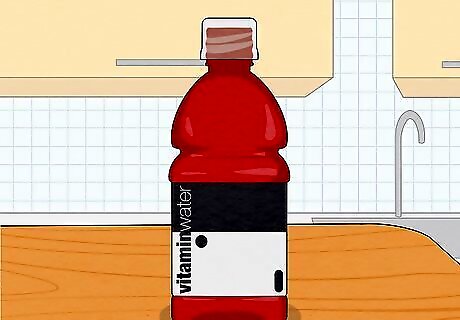
Stick with clear liquids with electrolytes. Gatorade, Vitamin Water, and Pedialyte are great things to drink when you’re sick. Not only are they tasty, but they’ll also help you stay hydrated and regain any vitamins you lost while vomiting. Sip on these drinks slowly and at room temperature. If you can, try to drink liquids high in potassium and sodium. Other acceptable drinks include tea, broth, apple juice, and flat ginger ale.
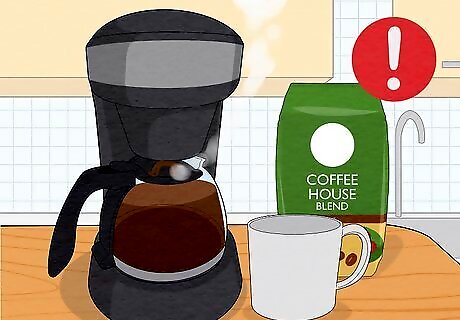
Stay away from beverages with caffeine, carbonation, and acidity. Soda, coffee, and orange juice are some of the worst things you can drink while sick. The bubbles, caffeine, and acidic nature of these beverages can make you feel more nauseous and prompt you to throw up.
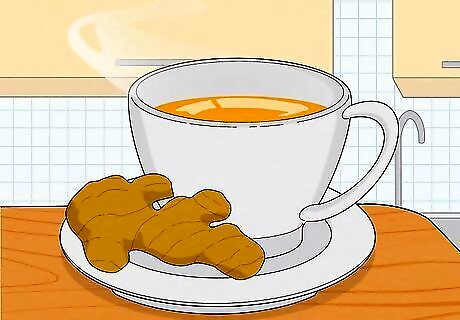
Drink ginger tea to calm your nausea. Ginger is a natural nausea reducer and can help if you have the flu, are dealing with morning sickness, or are undergoing chemotherapy. Purchase pure bagged ginger tea or make your own tea out of ginger root. Sip on the lukewarm beverage slowly.
Hydrate babies and children gradually. Once every 15-20 minutes, offer your baby 1 US tbsp (15 mL) of an oral electrolyte solution. Once every 15 minutes, offer young kids 1–2 US tbsp (15–30 mL) of an oral electrolyte solution, small pieces of ice, flat light soda (like lemon-lime or ginger ale), watered-down juice, or clear broth. If 8 hours go by without any more vomiting episodes, breastfeed your baby as you normally would (or offering 1–2 fl oz (30–59 mL) of formula slowly). Young kids can start to eat flavorless solid foods, like cereal, toast, rice, or applesauce. If an entire day passes without any vomiting incidents, switch the baby or child back to their normal diet.
Relaxation Techniques
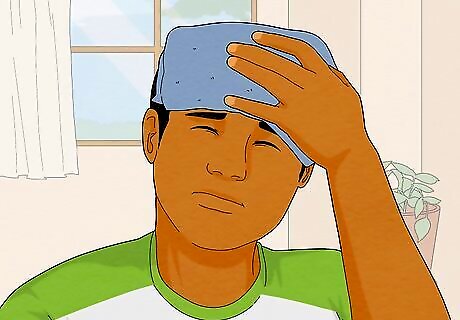
Place a cool, damp cloth on your forehead or neck. The cool touch of a washcloth can calm your nervous system, bring down a fever, and help you feel better. Run cool water over a clean cloth, wring out the excess water, and then drape the cloth over your forehead or the back of your neck. Never use an ice pack, as this can be too cold and shock your body. This method works really well for nausea caused by motion sickness or illness.

Breathe in some fresh air. Believe it or not, fresh air and slow, deep breathes can do wonders when you’re nauseous. Step outside for a few minutes or sit next to an open window. The fresh air can help soothe your lungs and body. Try doing breath exercises while you’re outside or near a window, as this can help calm your roiling tummy.
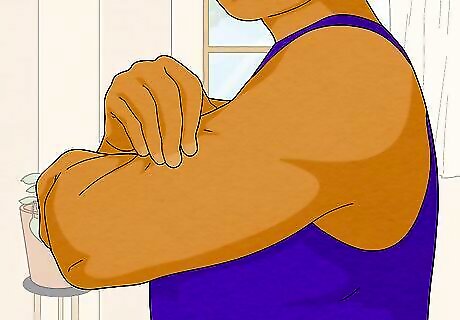
Ground yourself with your sense of touch. When you’re sick, it’s easy to get overwhelmed and focus primarily on your symptoms. Try to avoid this by focusing on what you can touch and feel instead. Here are some actions that may help: Pinch your arm Tap a fist on your thigh Pull on your hair Bite your lower lip Dig your fingernails into your forearm
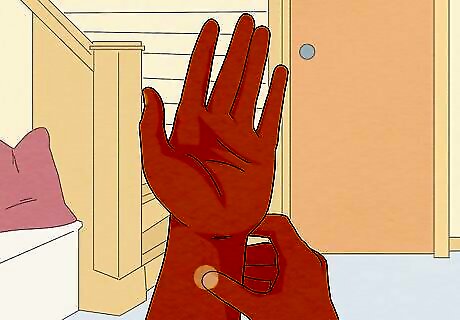
Try acupressure to ease nausea. Acupressure is the idea that pressure points on the body can help relieve pain. When you’re nauseous, press down on the inner part of your wrist. Face your palm toward your face, then massage your thumb in the middle of your wrist. As an alternative, press the inner parts of your wrists together or purchase acupressure wristbands. Acupressure may help some people but may not be effective for everyone.
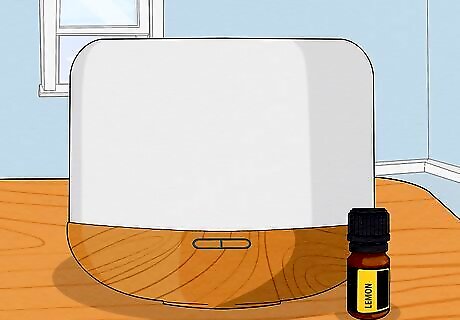
Diffuse lemon or peppermint oil to relieve nausea. Aromatherapy is a great way to relax your nervous system and soothe vomiting symptoms. Use an essential oil diffuser to fill your room with the fresh scent of peppermint or lemon. Lemon oil can help ease nausea and vomiting in pregnant women. Peppermint oil is an effective way to calm nauseous feelings and curb vomiting for those undergoing chemotherapy or hospitalization.
Eating
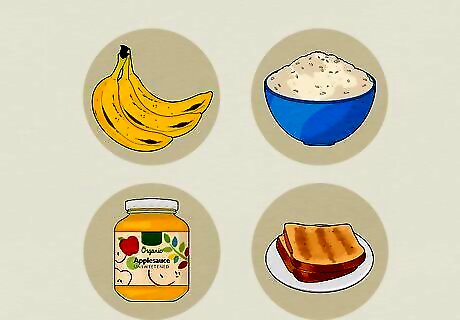
Follow the BRAT diet when you’re nauseous or sick. The BRAT (Banana, Rice, Applesauce, Toast) diet features bland foods that are easy on your stomach. These foods can help settle your stomach and absorb stomach acids, helping you feel less nauseous. Snack on dry crackers, plain toast, or graham crackers as well.
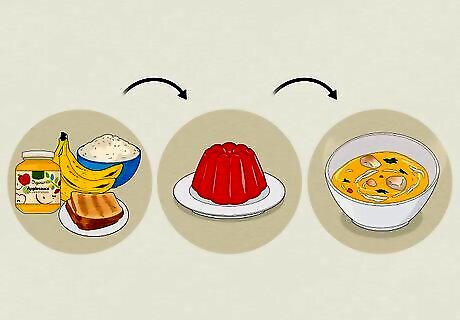
Eat small portions before trying full meals. When you’re sick, it’s important to start small and work your way toward a big meal. Start with the BRAT diet, nibbling on crackers and applesauce, and then slowly start adding new foods to your diet as you start to feel better. For instance, when you’re ill, lunch may look like a small serving of gelatin. After a day of not getting sick, try sipping a cup of soup. Then, when that settles well, gradually start eating normally again. Try eating every couple of hours when you're nauseous, even if it’s only a few bites.
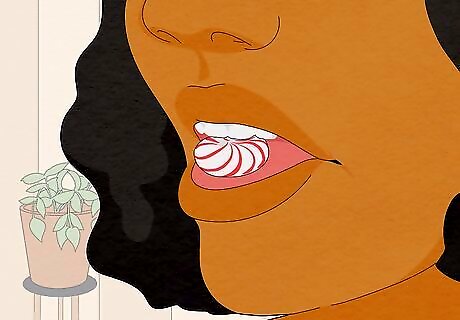
Suck on mint or sour candies to relieve nausea. Believe it or not, fresh-tasting mints and sour candies can help curb vomiting. These palate cleansers get rid of foul tastes and can soothe nauseous feelings. This is also a great preventative measure if you’re going through chemotherapy or morning sickness.

Chew or sip on ginger. Ginger can naturally calm nausea and relieve vomiting. Suck on a piece of ginger candy, chew on ginger gum, or sip ginger tea. The more authentic the product, the better. Avoid products with an artificial ginger flavor, as the real ginger root has all the soothing properties.
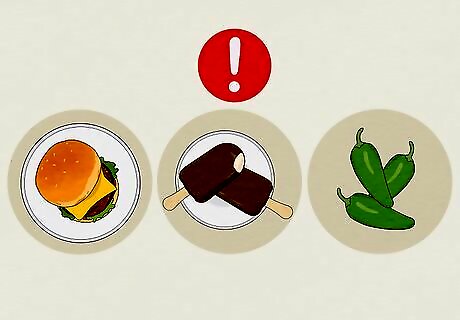
Stay away from acidic, spicy, fatty, or fibrous foods. These foods are hard to digest and can make you throw up more if you’re sick. So, avoid eating fast food, fried food, or extra hot food when you’re nauseous; otherwise, you may feel sicker. For example, burgers, fried chicken, and jalapenos are off the menu. If you also have diarrhea, avoid dairy products, which can be harsh on your stomach. As a general rule, avoid eating a mix of hot and cold foods when you’re sick, as the temperature change could make you vomit.















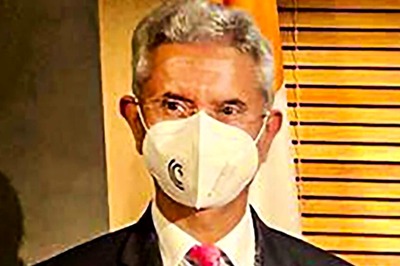
Comments
0 comment